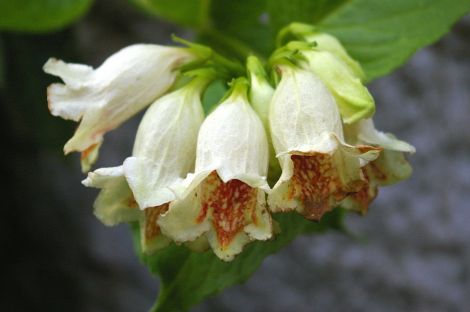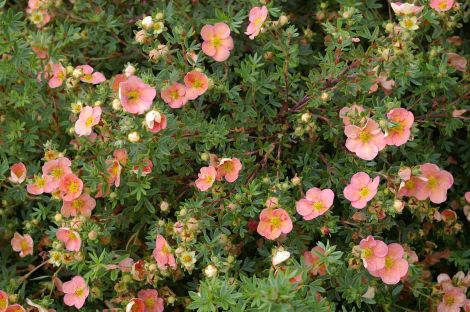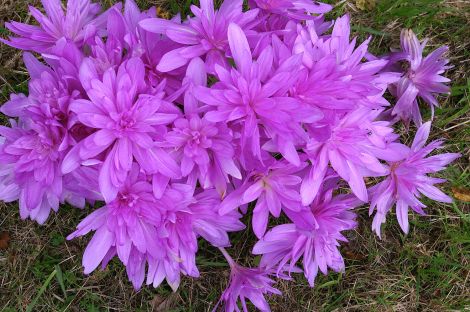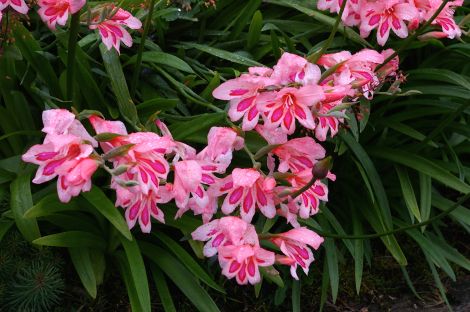Four Seasons / Four Seasons – Spring 2014
Spring is here, but that long, wet and windy winter has taken its toll on Shetland gardens.
Plants, especially those long in the tooth, not fully established, or simply not equipped to survive with their feet in water for weeks on end, have given up the ghost.
Shetland has no less than four garden centres and filling those gaps is no problem, as the Danish trolleys stacked with plants fresh from the southern polytunnels, and miles ahead of their Shetland counterparts, start to arrive in the isles.
A good proportion of their colour labels state: “propagation prohibited”, which is highly misleading, as in this country it is only propagation for sale that is illegal. These plants are “protected” by Plant Breeders’ Rights (PBR).
The Plant Variety Act was passed by Parliament in 1997 and designed to guarantee bona-fide plant breeders a small and time-limited royalty payment for the money and effort they’d put into creating a new plant cultivar. This is as it should be, and I’m thinking here of plantsmen such as Orcadian Alan Bremner, who has dedicated his life to the breeding of hardy geraniums and shrubby potentillas.
Sadly, the act lacks the necessary checks and balances and has been abused for years. Only a small minority of PBR plants are the result of an actual breeding programme, let alone a lengthy and expensive one. Chance seedlings and old, obscure garden varieties are frequently patented, as are plants taken from the wild or found in gardens abroad.
A nursery man in the west of Scotland came across a plant of Corydalis elata, a blue larkspur from China that has been grown in British gardens for a century, with a PBR label!
It is illegal to propagate PBR plants for sale, unless one is granted a licence, which is prohibitively expensive and completely out of reach for all but the very largest nurseries.
Become a member of Shetland News
Starting and running a plant nursery used to be straight forward by initially buying small quantities of stock plants, growing them on, then propagating them for sale. These days, if the nursery wants to stock the latest PBR fashion items, it will have to become largely a plant shop (garden centre), buying plants from wholesalers and quadrupling the price before putting them on the shelves.
The PBR monopoly is getting completely out of hand and gardeners pay millions every year for the privilege of owning, and in most instances, rapidly losing, PBR plants. And no, the cash, apart from a tiny percentage, doesn’t go to the breeders and growers, but into the bank accounts of huge national and international plant concerns.
Hundreds of plants are patented every year and are increasingly dominating the market. Most are micro-propagated and, as the owner of a prestigious alpine nursery near Inverness put it: “They are rushed out without the lengthy trials necessary for establishing if these plants are actually garden-worthy. They have no immune system, they’re not bred to withstand challenging conditions.”
To date, very few PBR plants have been awarded the Royal Horticultural Society’s Award of Garden Merit (AGM) and many, launched with fanfares a decade or less ago, have already been dropped from the wholesale lists, because they fail to stand up to the reality of gardening in all but perfect growing conditions.
Sadly, reliable cultivars, stalwarts grown in gardens for decades, even centuries, and tried and tested under different conditions, are becoming increasingly difficult or even impossible to find, because there is a lot more money to be made from PBR plants, with massive advertising campaigns ensuring there is public demand.
PBR plants are big business and gardening magazines, designed to serve the gardening public, but beholden to their advertisers, promote PBR plants – no questions asked.
Whenever I raise the PBR subject in Shetland, I’m told there’s nothing to worry about: “Nobody is going to check up on you up here.” That is as it may be, but two wrongs don’t make a right and it’s the principle that is at stake here, which brings me to perhaps the most sinister aspect of the Plant Varieties Act.
Deviations from the norm turn up in gardens and plant nurseries from time to time. The most outstanding ones are given a cultivar name – or not – as the case may be. The nursery owner is free to propagate and sell these – unless a similar plant has turned up somewhere else and been patented.
For years I’ve propagated and sold an outstandingly good form of Weigela middendorfiana, a lax shrub with large pale-yellow foxglove flowers. The best forms, such as mine, have intense rusty-red spotting in the throat. Imagine my dismay, when I came across “my” weigela in a Lerwick garden centre under the name Weigela ‘Toffee Cream’ complete with – you’ve guessed it – PBR label. By law, I’m now obliged to call my shrub ‘Toffee Cream’ and, if I want to continue selling it, have to buy it from a wholesaler.
This is no isolated case and countless nurseries have been embroiled in protracted and expensive court actions taken out by national horti-giants for propagating and selling plants that have originated with them, but have since been patented by somebody else.
There is now a groundswell against plant patenting, spear-headed by Michael Wickenden, one of our greatest plantsmen as well as a plant hunter with an experienced and discerning eye. He owns Cally Gardens Nursery, at Gatehouse of Fleet, Castle Douglas, DG7 2DJ, and offers a delectable range of non-PBR plants.
He states: “PBR are driven by the business community’s appetite for appropriating valuable natural assets ….whilst failing to regulate the system for the protection of the public who end up paying for it all. The solution lies with the gardening public who can defeat the system by simply not buying PBR plants….”
Nature, and that includes the plants in our gardens, belongs to all of us and should not be the exclusive property of a horticultural mafia. It’s a good thing for the Shetland gardener that our most reliable and beautiful garden plants carry no patents. Potentilla ‘Grace Darling’, Gladiolus carneus, Gunnera manicata, and Colchicum ‘Waterlily’, are just a few that spring to mind – the list is endless…
I’ve decided to follow Wickenden’s example and give PBR plants – the majority of them not worth growing in Shetland anyway – a wide berth.
Being a law-abiding citizen, I can’t sell you my fabulous Weigela middendorfiana, but if you could find your way to leaving a generous donation in Lea Gardens’ honesty box, I could give you one as a present, provided you promise never to call it “Toffee Cream”.
Rosa Steppanova
Become a member of Shetland News
Shetland News is asking its readers to consider paying for membership to get additional perks:
- Removal of third-party ads;
- Bookmark posts to read later;
- Exclusive curated weekly newsletter;
- Hide membership messages;
- Comments open for discussion.
If you appreciate what we do and feel strongly about impartial local journalism, then please become a member of Shetland News by either making a single payment, or setting up a monthly, quarterly or yearly subscription.












